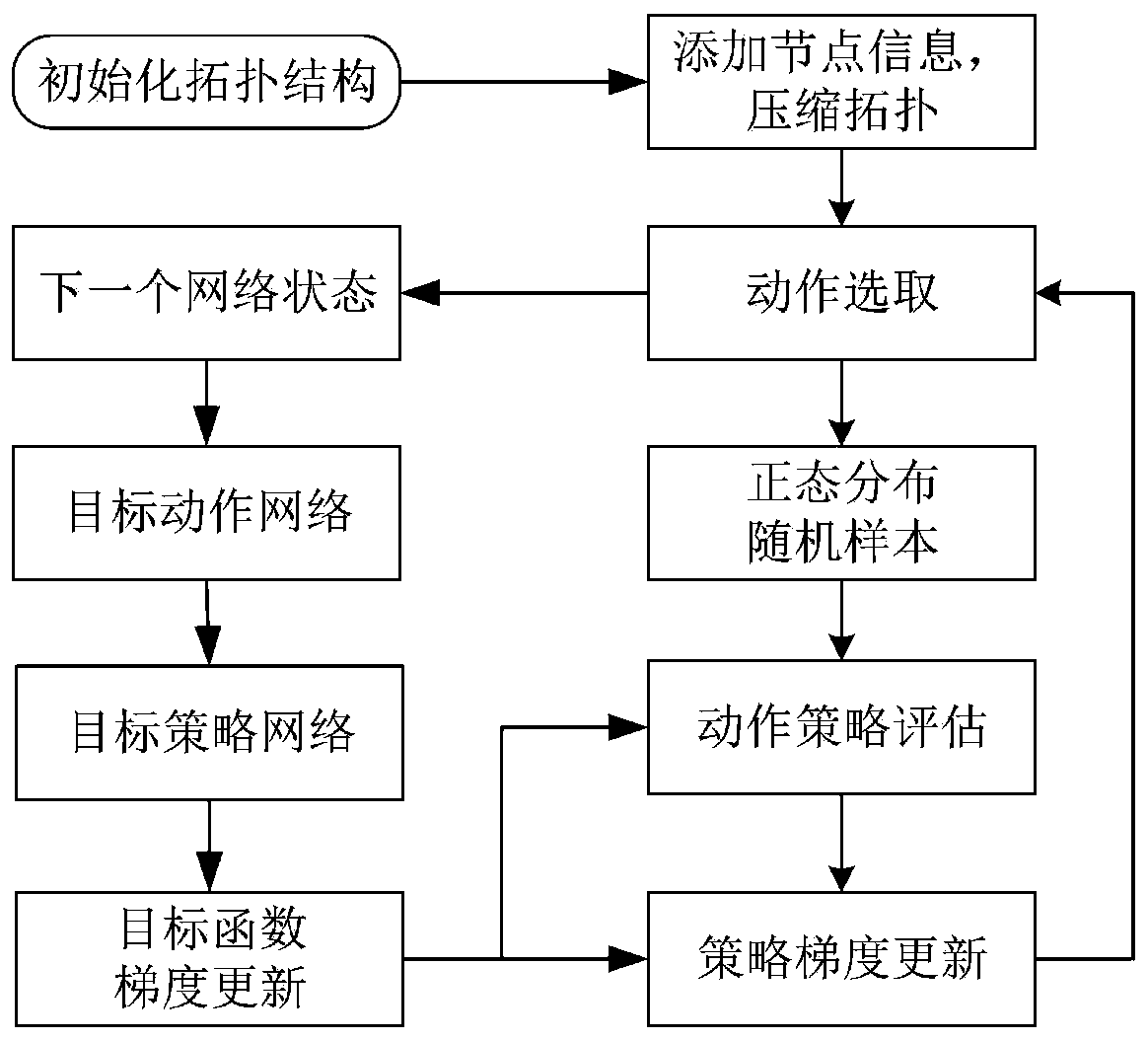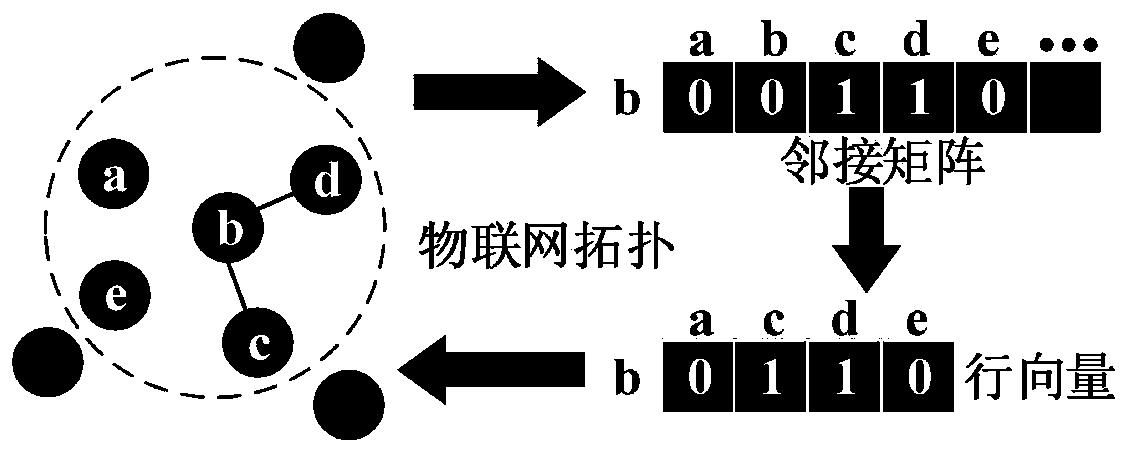Method for optimizing robustness of topological structure of Internet of Things through autonomous learning
A structurally robust and self-learning technology, applied in the field of Internet of Things networks, it can solve problems such as high time overhead, need to restart, and algorithms cannot accumulate optimization experience, achieve highly reliable data transmission, and improve the ability to resist attacks.
- Summary
- Abstract
- Description
- Claims
- Application Information
AI Technical Summary
Problems solved by technology
Method used
Image
Examples
Embodiment Construction
[0042] The specific manner, structure, features and functions of the node deployment strategy designed according to the present invention are described in detail below in conjunction with the accompanying drawings.
[0043] Such as figure 1 As shown, it is an overall flow chart of a method for self-learning and optimizing the robustness of the topology of the Internet of Things according to the present invention. The method comprehensively considers the mapping relationship between large-scale continuous action space and discrete action space, the compression method of network topology, and the nodes The connection relationship can effectively improve the robustness of the network while enhancing the self-learning behavior of the overall network, balancing the distribution of node connections and ensuring high-quality communication capabilities of the network. The process of the method specifically includes the following steps:
[0044] Step 1: Initialize the IoT topology. A...
PUM
 Login to View More
Login to View More Abstract
Description
Claims
Application Information
 Login to View More
Login to View More - R&D
- Intellectual Property
- Life Sciences
- Materials
- Tech Scout
- Unparalleled Data Quality
- Higher Quality Content
- 60% Fewer Hallucinations
Browse by: Latest US Patents, China's latest patents, Technical Efficacy Thesaurus, Application Domain, Technology Topic, Popular Technical Reports.
© 2025 PatSnap. All rights reserved.Legal|Privacy policy|Modern Slavery Act Transparency Statement|Sitemap|About US| Contact US: help@patsnap.com



